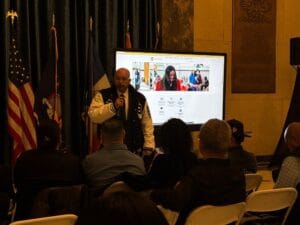LANGTIVISM | MAKING SENSE OF CONFUSABLE WORDS
Words are easier to understand once you know their history, nature, classification and structure without necessarily need to remember the names of the various categories….

The English Language has a huge vocabulary, that means the users have a wide choice of words at your fingertips to express ideas, thoughts and feelings. One gets confused sometimes in trying to select the right word for various occasions, situations and linguistic contexts. There are three categories of words which often cause confusion in usage and communication. They are homonymy, hyponymy and polysemy.
This is an attempt to call the attention of the readers to the nature of the words in each of the three listed word categories. Words are easier to understand once you know their history, nature, classification and structure without necessarily need to remember the names of the various categories.
The first in the categories of confusable words is homonymy. Simply, homonymy is the relation that exists between two or more words with the same structure but divergent senses. Two categories of homonyms can be identified viz; homophones and homographs. The word homophone, which means having the same sound. A homophone is a word that is pronounced in the same way as another but is spelled in a different way and has a different meaning. In other words, they sound alike but have totally unrelated meaning (Kirkpatrick, Moody and Abraham, 2017).
Homophones cause a good deal of confusion because the words are pronounced in the same way as each other, but they have different meanings and spellings. A minor word of caution here is that pronunciation in this context is strictly Received Pronunciation (RP). However, native speakers may have managed to ignore the existence of RP and gone on pronouncing words in their own natural and sweet way. Sometimes only two words are involved, but sometimes there are three or four. Examples of homophones include sum/some, new/knew, rite/right, etc. (Kirkpatrick, 2014).
For better insights, the words ‘currant’ and ‘current’ have nothing in common except their pronunciation. Currant is a noun meaning a small dried grape used in baking, as in: we need flour, butter, eggs and currants to make this cake. Current however has a much wider range of meanings. As a noun it can be found in such contexts as ‘electric current’, ‘the current of a river’ and ‘a current of cold air’. As an adjective, it means ‘belonging to the present time’, as in ‘a current affairs programme on television’ and ‘the current fashion in food’. Other relevant examples of homophones heal/heel, hear/here, rain/reign/rein, alter/altar, right/rite/write/wright etc.
Let’s examine each of the given homophones heal/heel are pronounced in the same way but have very different meanings. ‘Heal’ is a verb meaning ‘to become or make healthy again’, as in: The wound has started to heal at last. Whereas ‘heel’ is the back part of a foot below the ankle, as in: ‘Her shoes were too tight and she got a blister on her heel’. Hear/here are other two words that share pronunciation but have a different meanings. ‘Hear’ is a verb meaning ‘to become aware of sounds by means of your ears’, as in: She didn’t hear the doorbell because she is deaf. Here on the other hands is an adverb meaning ‘this place’, as in: “I am not going anywhere. I am right staying here”.
Example of three words homophones is rain/reign/rein. The words ‘rain’, ‘reign’ and ‘rein’ are pronounced alike but are otherwise unrelated. Rain is water that falls from the sky, as in: ‘We got very wet in the heavy rain’. Reign refers to the period of time when a king or queen is ruling, as in: ‘The second world war took place during the reign of George VI’. Rein however means ‘a long narrow band of leather used to control a horse’ and it is mostly found in the plural form, as in: ‘The rider let the reins fall from her hands as her horse came to a standstill’.
Example of homophone with four words includes righty/rite/write/wright. These words are pronounced alike but are completely different in meaning. Right can either be noun or adjective. As an adjective ‘right’ has several meanings. It can mean ‘correct’, as in ‘the right answer’ or ‘he turned out to be right’. It can also mean ‘the opposite of left’, as in: ‘He held it in his right hand’. As a noun, ‘right’ refers to something that you are legally, officially or morally allowed to do or have, as in: ‘You have no right to refuse us entry to this park’.
The word ‘rite’ is a noun which refers to a ceremonial act that is always performed in the same way, often as part of a religious ceremony, as in traditional funeral rites. The word write is a verb meaning ‘to make letters, words or numbers on paper using a pen or pencil’, as in: ‘Primary school pupils just learning to write’. Last in the given example of homophone with four words is the word ‘wright’. The word wright usually comes as the second part of a compound word which indicates someone who works at particular trade or job, as in ‘shipwright’ and ‘playwright’.
Homograph is another example of homonyms. Simply, homographs are words with the same graphic (written) features but different meanings. Indeed, homographs occur when words care structurally the same, that is, in terms of spelling but are different in meaning (Odebunmi, 2001). A good dictionary will guide in identifying countless number of words that can be regarded as homographs. For example, the word project is a homograph because project can be a task and in the same word project could mean to stick out. Pool could mean a body of water and the same word can be a form of gambling.
The word school can mean a group of fish and the school can be a place of learning. The word ruler can mean a leader and the word ruler could mean a flat object used for measuring. The word scale which is the outer layer of fish skin, the same word scale could mean sequence of notes in music.
Another example of homograph is lead which means to guide others, the same word lead could be a chemical element. The underline thing here is that a homograph has the same spelling as another word but is different in meaning and may ne pronounced differently (Okesipe and Okolo, 2013).
The second category of word group that constitutes a challenge to users of language is hyponyms. Hyponyms refer “to a relation of inclusion holding between words”. For example, ‘scarlet’ is included in ‘red’, ‘goat’ in mammal and ‘hibiscus’ in flower. In hyponymy, we have a superordinate term and co-hyponymy of the same lexeme. For example, the word ‘family’ is hyponym and superordinate term with mother and children as co-hyponyms. Another example of a word that can be regarded as hyponym and superordinate term is cat. Of course, cat as a superordinate term has co-hyponyms such as small (domestic) cats and big (wild) cats such as leopard, tiger, jaguar and cheetah. It is important to note that hyponymy goes with the concept of entailment. For example, ‘this is a bitch’ entails ‘this is a pig’ and ‘here is a cheetah’ entails ‘here is a cat’ etc.
Whoever desires to be recognized as a great writer should therefore not limit himself or herself to acquisition of only good vocabulary development and grasp of basic rules of grammar. If a person takes time to study hyponymy, one will understand the relationship between two or more words. This is because hyponymy establishes the relationship between specific and general terms. In this relationship, the specific term is said to be included in the general term, as in the case of cow and animal, tennis and sport, apple and fruit and painting and art.
Thus, we can say that cow is a hyponym of animal, tennis is hyponym of sport, apple is a hyponym of fruit etc. In other words, there is a superordinate term with reference to which a subordinate term is defined as in cow is a type of animal, tennis is a type of sport, apple is a type of fruit etc. Hyponym is therefore a hierarchical relationship between words.
The third category of easily confused words is polysemy. Polysemy refers to the concepts of a word as having multiple senses. Polysemy is derived from the prefix “poly” which means many and “semantic” which relates to meaning. Polysemy therefore refers to the presence of more than one meaning in a single word. Words that have more than one meaning are said to be polysemous. Polysemous words are similar to homonyms because it is the same word with different meanings. Relevant examples of polysemy includes bob, boggle, board, skip, remit etc. Each of the words has several unrelated meanings depending on situational contexts. For more clarity, the word ‘bob’ can mean to move quickly up and down; to fish with a bob; to be fooled; to take by checking; to polish with a bob; to nod and curtsy briefly; to move in a short jerking manner among other meanings and uses of the word.
Another example of polysemy is skip which means different things such as to spring or hop lightly; to make jumps over a twirling rope; to overlap; to omit among other meanings and uses. A major problem with polysemy is how is it to be distinguished from homonymy, where two words have the same phonological words, that is, are pronounced alike.
Different suggestions have been made as to the criteria that could be used to decide which are instances of polysemy and which, of homonymy (Yadugiri, 2013). One is that the etymology or history of words will show whether a pair of words were originally distinct or not, and if distinct, we have an instance of homonymy, otherwise of polysemy. Another criteria suggested is the closeness of the meanings and if the different meanings are close, we have an instance of polysemy and if not, an instance of homonymy.
But neither criterion has been accepted as final and the debate continues because both have problems. In some cases, which etymology shows to be instances of polysemy, the different meaning appear to be totally unrelated as with the word ‘nail’, and in many cases it is difficult to decide whether the meanings are close or not. Both ‘nail’ and ‘head’ are said to be polysemous words. This is because the word nail could mean either finger nail or the small thin piece of metal with a sharp point, and the word ‘head’ may refer to the part of the body containing the eyes, the nose, etc or the person in charge of an organization.
With the complexities of identified in the instances of polysemy, it is the compilers of dictionaries who have to make critical decisions in this regard because the practice is to give separate entries for homonyms, whereas the different meanings of polysemous words are listed under a single entry.
It is against this background that I wish to suggest that every writer or user of language should carefully pay attention to these confusable words in speech and writing to avoid unnecessary pitfalls in communication.
REFERENCES
Kirkpatrick B. (2014) Better English Usage: Glasgow, Geddes & Grosset pp. 273-280
Kirkpatrick B., S. Moody and E. Abraham (2017) Webster’s Shape Up Your English: Glasgow, The Gresham Publicity Company pp 261-277
Odebunmi A. (2001) The English Word and Meaning: An Introductory Text: Ogbomoso, Ladoke Akintola University of Technology pp 64-67
Okesipe K. and MSC Okolo (2018) Essentials of Communication in English for Nigerian Universities: Ibadan, Rebuttal Books pp 139-141
Yadugiri M.A. (2013) Making Sense of English: A Textbook of Sounds, Words and Grammar; New Delhi, Viva Books pp 144-146













